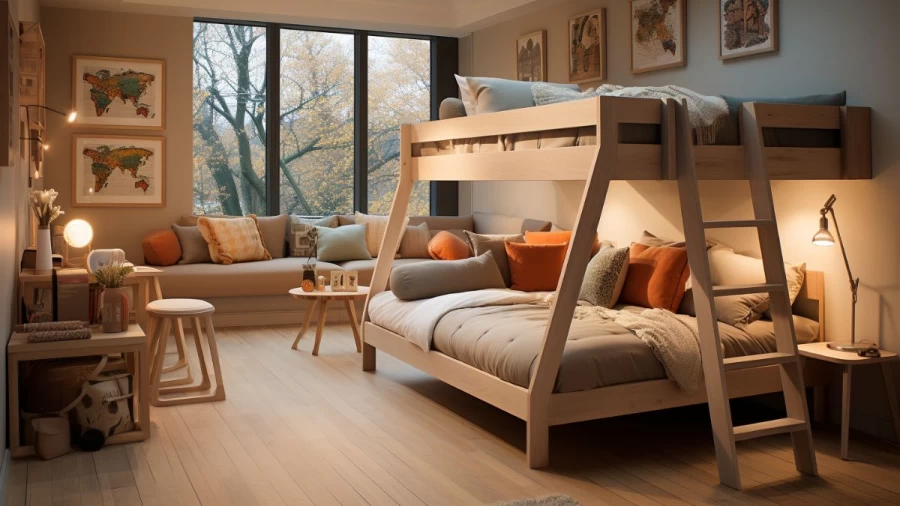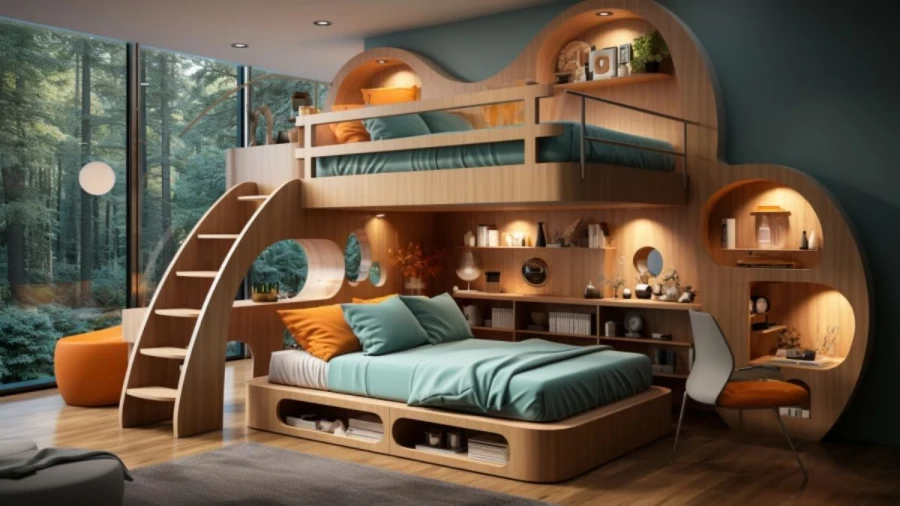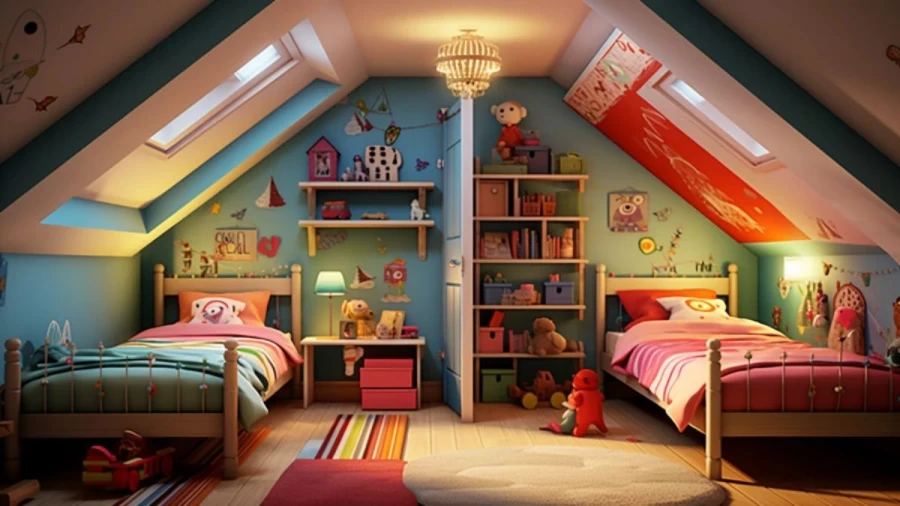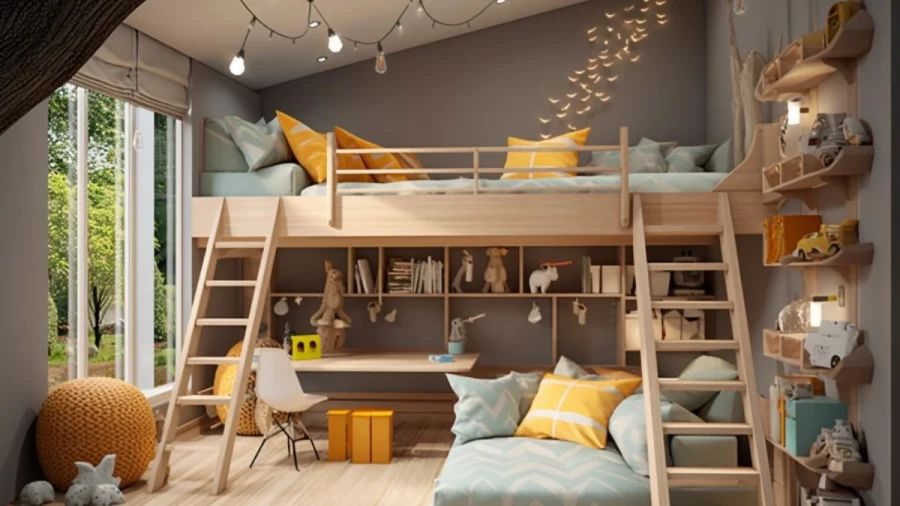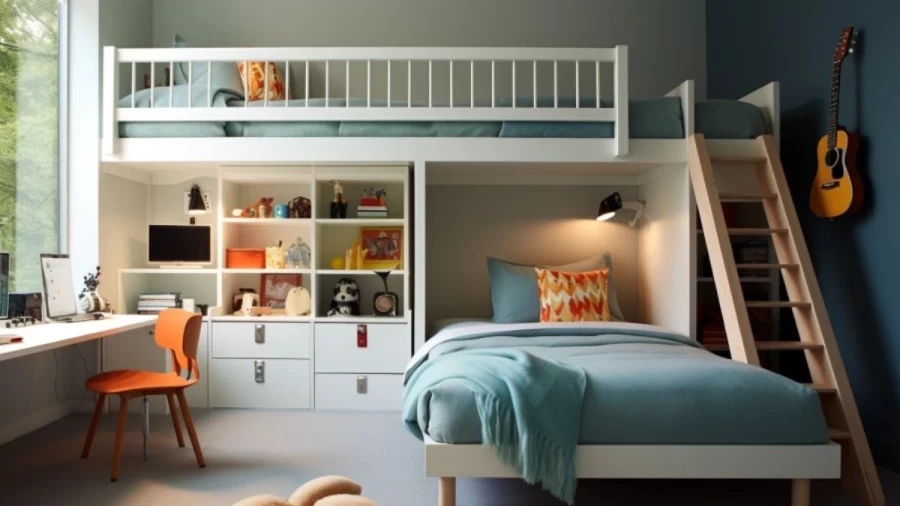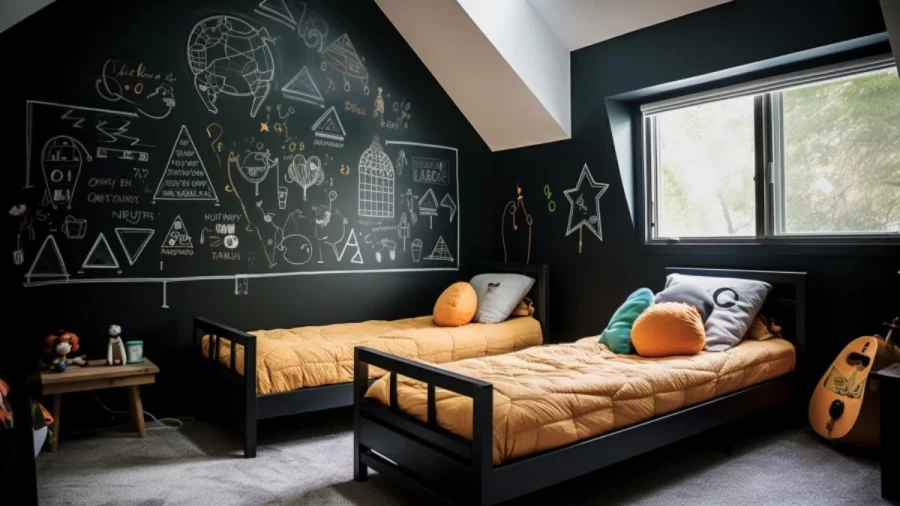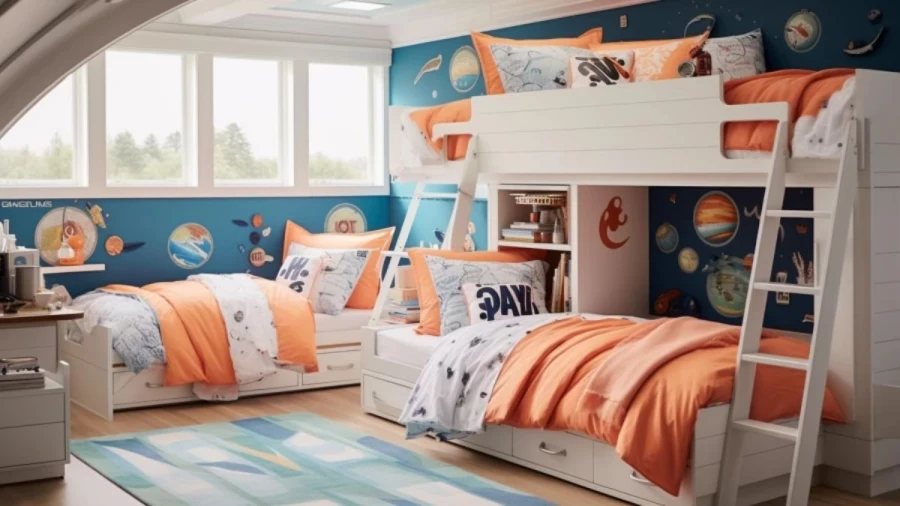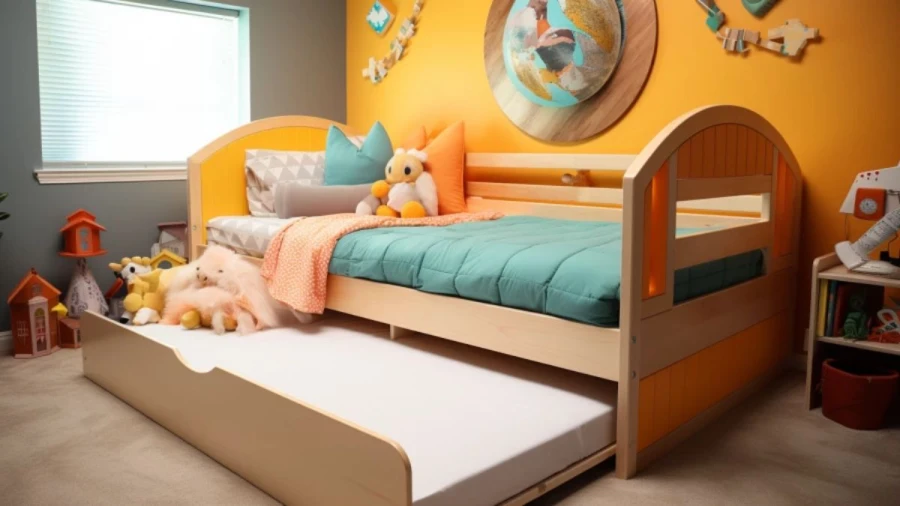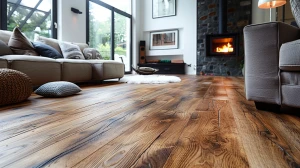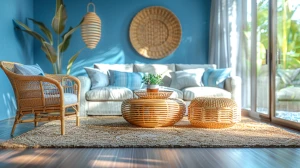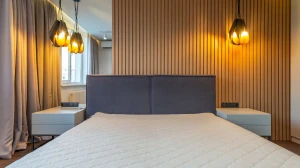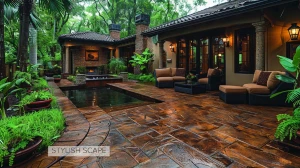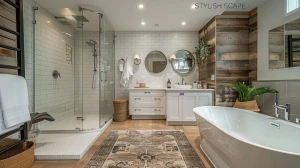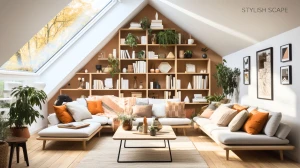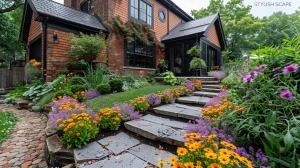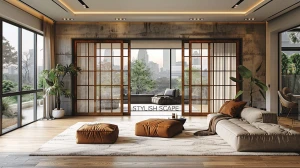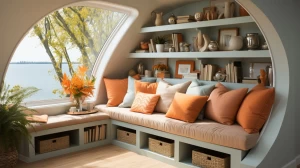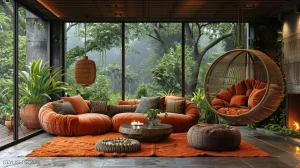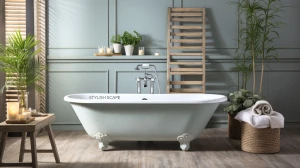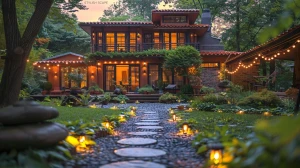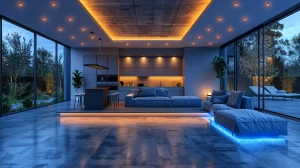
8 Innovative Designs for Shared Kids Bedroom Ideas
Explore 8 creative and practical design Shared Kid's Bedroom Ideas to transform your children's bedroom into a harmonious, space-efficient haven for siblings, from bunk beds to imaginative themes.
by Sangeetha M
Updated Jun 26, 2024
On This Page
Shared Kids Bedroom Ideas
In the world of interior design, creating shared spaces for children can be both a delightful challenge and an opportunity for boundless creativity. Whether your little ones are siblings sharing a room out of necessity or simply to foster companionship, finding innovative and practical ways to design their shared bedroom is essential. To help you navigate this exciting endeavor, we've compiled a collection of eight innovative concepts that will not only maximize space but also inspire harmony and creativity within the room.
From space-saving bunk beds to imaginative theme-based designs, this guide is your gateway to transforming a standard shared bedroom into a vibrant, functional, and inspiring haven for your children. Each concept in this compilation is carefully curated to cater to a variety of needs and preferences, ensuring that you'll find the perfect solution for your unique situation.
So, let your imagination run wild as we explore how to turn a shared children's bedroom into a haven of fun, functionality, and togetherness, where dreams are nurtured, and lifelong memories are created.
1. Bunk Beds with a Twist
Custom-built bunk beds with unique features can make bedtime and playtime more exciting for kids sharing a room. These beds can be designed to include built-in desks for homework or creative activities, bookshelves for easy access to their favorite stories, or even a play area beneath the lower bunk, equipped with curtains for a cozy and imaginative hideaway.
Incorporating personalized touches like themed bedding or curtains can turn these bunk beds into a space where each child can express their individuality. Consider safety rails for the top bunk and built-in lighting for added convenience and comfort. Bunk beds are not only practical for saving floor space but also offer a sense of adventure and fun for kids.
To make the most of this idea, consult with your children to understand their specific needs and preferences. They might have input on the design, such as color choices or the type of storage they'd like under their bunk. This collaborative approach can lead to a shared bedroom that both kids love and feel a sense of ownership over. Plus, with the right design, the bunk beds can serve as a focal point in the room, making it both functional and visually appealing.
2. Themed Bedrooms
Themed bedrooms are an excellent way to create a shared space that reflects the interests and personalities of both children. Begin by selecting a theme that resonates with both kids, whether it's a favorite movie, a shared passion like outer space, or an under-the-sea adventure. Once the theme is chosen, you can decorate the room accordingly. For instance, in an outer space theme, you could paint the walls in cosmic colors and add glow-in-the-dark star decals.
Incorporate themed bedding, wall art, and accessories to complete the look. Encourage your children to participate in decorating decisions and possibly create DIY decorations to personalize their space further. To maximize the impact of a themed bedroom, consider adding educational elements related to the theme. For example, in an outer space theme, you could include informative posters about the solar system and constellations to stimulate their curiosity and learning. Themed bedrooms can be a source of inspiration and creativity for your kids, and they'll enjoy spending time in a room that transports them to their favorite imaginary worlds.
3. Half-and-Half
The "half-and-half" approach divides the shared bedroom into two distinct spaces, each reflecting one child's personality and preferences. Consider using a creative divider like a low bookshelf, curtains, or a painted diagonal line to visually separate the room. Each side can have its own color scheme, decor, and personal touches. This design allows each child to have their own area while still sharing the same room.
It's essential to maintain a balance so that the room feels cohesive and harmonious. To achieve this, use complementary or coordinating colors for the walls, and ensure that any shared furniture or decor elements, such as lighting or window treatments, tie the two sides together. To make this concept work effectively, involve both children in the design process.
They can choose their own color scheme, bedding, and decor, giving them a sense of ownership and control over their half of the room. Additionally, you can designate a shared area in the center, such as a play zone with toys, games, or a small table for collaborative activities. This concept encourages children to learn about sharing, respecting personal space, and making design decisions as a team.
4. Loft Beds
Loft beds are a fantastic space-saving solution for shared bedrooms, as they allow for the utilization of vertical space. To give this idea a creative twist, design loft beds that incorporate unique features underneath. For example, you can place a study area with a desk and bookshelves below one loft, creating a dedicated workspace for one child. Beneath the other loft, design a cozy reading nook with bean bags, pillows, and wall-mounted bookshelves, giving the second child a relaxing place to read or unwind.
To add a playful element, consider customizing the loft bed with a fun slide or ladder for easy access. This design can help promote a sense of individuality while maximizing functionality. Ensure that both children have a say in personalizing their own loft areas. They can choose the color schemes, bedding, and decor that resonate with their unique tastes. Encourage them to decorate their study and reading spaces with their artwork and achievements, creating a personalized and inspiring environment.
5. Vertical Storage
Vertical storage is essential in a shared kids' bedroom to keep the space organized and clutter-free. To enhance this concept creatively, consider installing colorful and modular shelving units on the walls. These can be used for both practical storage and to showcase the kids' favorite toys, books, and decorative items. You can also incorporate wall-mounted bins or baskets to keep smaller items neatly organized.
Additionally, utilize the vertical space behind the bedroom door for hooks, hangers, or pegboards to hang backpacks, hats, and other accessories. To make the most of vertical storage, involve your children in the organization process. Encourage them to choose fun containers and labels for their belongings, making it easier for them to find what they need. This approach not only keeps the room tidy but also teaches valuable organizational skills.
6. Chalkboard or Whiteboard Wall
Transforming one wall into a chalkboard or whiteboard can be both functional and creative. By doing so, you provide your children with a space for drawing, writing, and brainstorming right on the walls. This feature encourages creativity and learning while adding an interactive element to the room. Kids can use colorful chalk or dry-erase markers to express themselves, create art, or even work on homework assignments.
To maximize the fun, consider adding a colorful chalk tray or marker holder on the wall for easy access. You can also frame the chalkboard or whiteboard to make it visually appealing. To make this design concept more engaging, involve your children in selecting the wall color and helping to prime and paint the chalkboard or whiteboard surface.
Encourage them to use the wall for different purposes, from drawing and practicing math problems to leaving each other notes and reminders. This feature can be an ever-evolving canvas for their creativity and communication.
7. L-Shaped Beds
L-shaped beds are a brilliant solution for shared children's bedrooms, making the most of every inch of available space. This innovative concept allows you to optimize the room's layout, creating a cozy and compact arrangement that not only accommodates two sleepers but also opens up ample floor space for play and study areas. The L-shaped design allows for individuality, granting each child their own personal sleeping nook, offering a sense of privacy even in a shared space.
These unique beds can be customized to fit the room's dimensions and aesthetic preferences. Whether you choose a traditional wooden design or a modern metal frame, there's plenty of room for personalization. Furthermore, you can add a fun and functional element by incorporating built-in storage, like drawers or shelving units, into the bed's structure. This helps keep the room tidy and organized, offering a designated spot for toys, books, and other essentials.
L-shaped beds for kids' shared bedrooms are a fantastic example of how clever design can enhance both comfort and functionality, all while fostering a strong sense of togetherness and individuality within a shared space.
8. Trundle Bed
Trundle beds are a fantastic choice for shared bedrooms as they provide flexibility without compromising on comfort. Not only do they maximize the usable floor area during playtime or study sessions, but they also eliminate the need for additional beds that can clutter the room. When nighttime arrives, simply pull out the trundle bed, and you have an instant, cozy sleeping space for the second child, making it a practical and elegant choice for siblings sharing a room.
Furthermore, trundle beds come in a variety of styles, from classic to contemporary, allowing you to match the aesthetic of the room effortlessly. You can even explore trundle beds with built-in storage options, ensuring that the shared bedroom remains clutter-free and well-organized. The versatility and space-saving benefits of trundle beds make them an exceptional addition to any children's shared bedroom.
